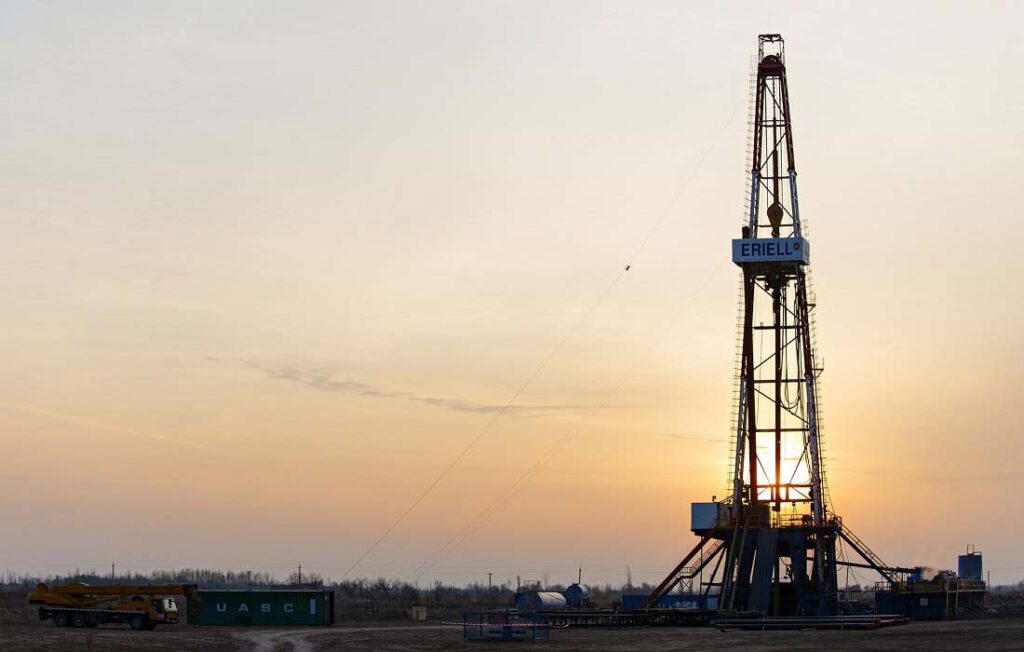Fracking. The process of using a combination of water, chemicals, and sand to create cracks in rock formations deep underground in order to collect once-trapped gas and oil for use in the fossil fuel industry. Unlike traditional means of capturing fossil fuels, hydraulic fracturing (“fracking”) was touted as a “cleaner” alternative and, thus, has become a burgeoning industry over the past few decades. Fracking is not and NEVER was a transition energy.
The two states at the forefront of this industry? Texas and Pennsylvania. Combined, there are more than 629,000 fracked oil and gas wells in these two states—and this number only represents those wells that are reported. Because of the significant upfront investment and long timelines required for fracking, many companies go bankrupt, leading to a significant number of orphan wells. Unreported orphan wells are estimated to be in the tens of thousands, and without mandated clean-up standards or a national tracking system, abandoned oil and gas wells are a huge source of methane pollution across the country.
The U.S. is the second-leading exporter of fracked gas globally, and we unwisely continue to invest in this form of fossil fuel extraction, even as scientists and activists call for bans on new fossil fuel and petrochemical projects. And the consequences of these decisions are very, very human. They’re happening now. And they’re not good.
The History of Fracking in Pennsylvania
Fracking happens all over the world, but to provide a more grounded view, let’s take a look at the state of Pennsylvania specifically. The practice of fracking became standard practice in the 1940s, but its history dates back even earlier in Pennsylvania when liquid nitroglycerin was used to “shoot” oil wells, stimulating rock formations to increase oil flow and extraction. Since the invention of hydraulic fracturing, more than one million wells have been drilled and fracked in the state. But what made this process so popular?
For starters, Pennsylvania is rich in shale (the deep, porous rock formations that house trapped gas and oil underground), and economically struggling communities were promised significant money to lease their land to fossil fuel companies for the extraction of fossil gases and oil. Unfortunately, this money was insubstantial compared to the construction, noise, contamination, and illness that faced these (often rural) communities.
Public safety policies are rarely enforced in pro-fossil fuel states, and communities suffer health complications from contaminated drinking water and breathing polluted air.
So, what are these risks?
A Quick Note
The Health and Environmental Harms of Fracking
An analysis by the Environmental Defense Fund shows that all elements of the oil and gas supply chain, including pipelines, compressor stations, and other fracking infrastructure, release methane into the atmosphere. Even conventional wells—those that are stimulated without the use of fracking or horizontal drilling—also contribute to methane release and leakage.
Fracking has also been connected to a greater number of earthquakes as the process of drilling and splitting rock destabilizes the structure of the land, causing erosion and making it less stable overall. The disposal of wastewater is also a factor in creating what is known as an “induced earthquake.” This not only poses risks to the land itself, but also displaces the wildlife that live in proximity, damaging existing—often critical—habitats.
Additionally, the practice of fracking requires a lot of water (fracking fluid consists of roughly 97% water), and the chemical cocktail is largely unknown. This often results in polluted water tables and the release of toxins, including carcinogens (cancer-causing chemicals) and other pollutants, which have been proven harmful to human health.
The state of Pennsylvania has the third highest cancer incidence rate in all of the United States. There are fifty-five known chemicals that fracked oil and gas operations release into the atmosphere, water, and soil—all known to cause cancer. 20 of these chemicals “have evidence of increased risk for leukemia or lymphoma specifically,” according to a study completed by the Yale School of Public Health. Oil and gas workers are consistently exposed to these toxic chemicals, one more commonly known one being benzene, as are those who live in close proximity to fracked well sites. Other health issues that have been linked to fracking include asthma and other lung conditions, low birth weights and birth defects, cardiovascular disease, and more.
Are the Benefits Worth It?
No, they’re not. Especially not when there are cheaper, cleaner, and more sustainable options available to us. Clean energy solutions, like solar and wind, are now cheaper than any other source of energy—gas, geothermal, coal, and nuclear included. And they come without any of the negative environmental and health repercussions created by the chemicals and processes of fracking (and fossil fuel retrieval in general). And while some may argue that fracked gas produces less carbon pollution than other fossil fuels when it burns (which is true), it is far from a “clean” energy source.
Solutions and Why You Should Care
The United States needs to transition to a clean energy economy, developing more renewable power and further improving energy efficiency. It’s a big lift, but energy usage is the same now as it was in 2000; something that’s been possible because of improvements in overall energy efficiency. These improvements have contributed more to the U.S.’ energy needs for the past 40 years than any known fossil fuel source; oil, coal fossil gas, or nuclear power. So, what does this mean for our future? It means we can power our economies with renewable power and further energy efficiency —we just have to make them a priority.
Other solutions that will help protect our communities and environment include:
- Eliminating the creation of new oil and gas projects (including pipelines, compressor stations, frack pads, oil and gas wells, or petrochemical hubs)
- Establishing a ban on fracking (or, at the very minimum, establish protective buffer zones in states with unfavorable politics)
- Reduce plastic at the source (e.g., petrochemical hubs) rather than promoting the myth that we can recycle our way out of the plastics pollution problem
Quite frankly, the arguments made in favor of fracking are largely from those benefiting financially from the process. Major corporations and wealthy individuals who back fracking are the only ones benefiting from it, and they’re certainly not the ones living with the health and environmental consequences.
The truth? Fracking is—
- NOT cheaper than other clean energy sources
- MORE harmful to human health than other clean energy sources
- MORE destabilizing to the environment than other clean energy sources
- Causing ACTIVE SUFFERING to the people living near fracking sites
- DAMGING our environment; air, water, land, and wildlife
The time for compromises is long past; we need change now. And we’ll get there by electing officials who actively support clean energy legislation, supporting bans on fracking and other fossil fuel retrieving methods, educating ourselves on ongoing issues like fracking, and being loud about what we will and will not stand for in our communities.
It’s time for a change. Let’s make it happen together.




